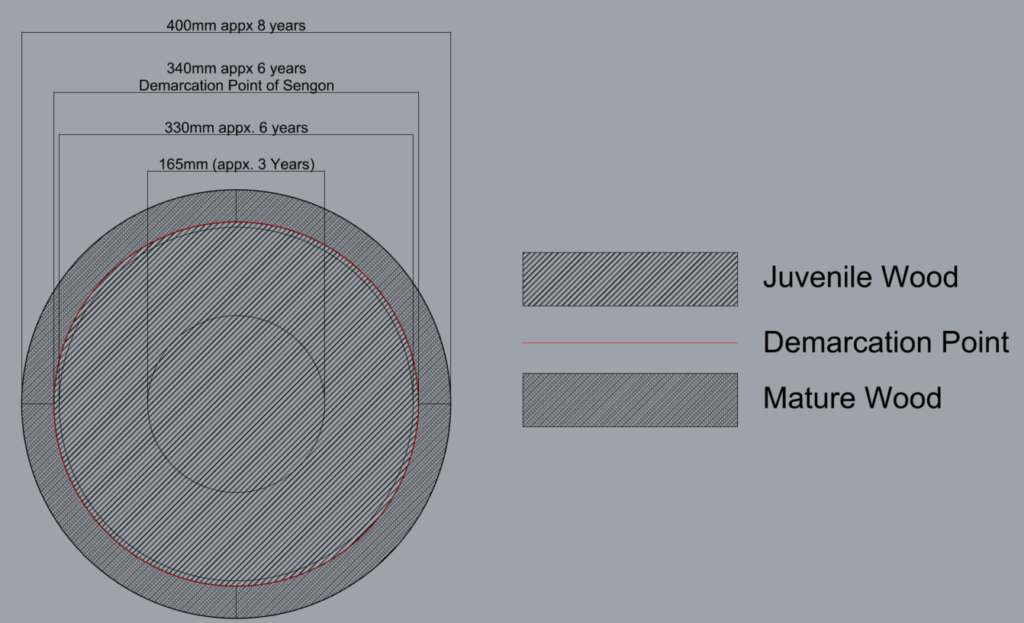In order to increase product innovation in the Indonesian lightwood processing industry, the relevant stakeholders along the value chain need to understand the importance of sorting and grading of the lightwood. A crucial aspect is to understand that fast-growing plantation wood with a short cutting cycle, contains large portions of juvenile wood.
What does this have to do with the sorting of wood? Well, a juvenile characteristic of wood means that the density and fibre length within the same tree and cross-section is not constant. The density generally increases from the pith to the bark. For the tree species Sengon (paraserianthes falcataria), for example, the density may range between 270 to 430 kg/m3. After a certain age, fast-growing tree species develop a demarcation point, after which the density generally stays constant.
Juvenile wood can create challenges during drying and processing. Higher proportion of juvenile wood can have a significant impact on the quality and the market price of the wood.
The determination of the demarcation point (transition between juvenile wood to mature wood) can be an important measure during sorting and grading.
For companies and farmers that understand the importance of juvenility, a way to product innovation is not far away. The illustration below shows the correlation of harvesting age and the amount of juvenility within the wood. It becomes clear that current harvest cycles of 5 years contain 100% of juvenile wood.

A longer harvest cycle of >8 years shall be aimed by the industry in order to increase log diameters and amount of mature wood; ultimately this will help the industry to transform and venture into higher value added products.



